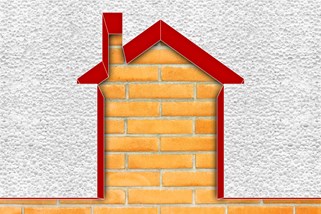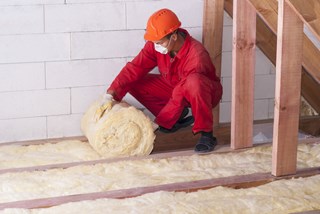Preventing heat loss through home insulation
17 October 2023
Loft insulation top tips
Heat will always attempt to move from a warm space into a cold one. Essentially, the heat in your home is lost through the roof, windows, walls, floors and gaps around your door. Insulation is key to solving these issues and, although it can be costly and sometimes time consuming, you can save a great deal in monthly bills. Simply fitting carpets, curtains or even draught excluders can help towards insulating your home, but heat loss through walls etc requires further investment.

Double glazing enables air, or a vacuum, to be between two panes of glass as air is a poor conductor of heat and the space between the glass is too small to enable circulation. This allows heat to stay inside the home. Also, inside the window is a ‘Low E (emissivity) coating’ which reflects heat back into the room.
Loft insulation is one of the most common applications of this heat retaining process. By putting foil-wrapped or coated insulation in the cavities of a loft, the fibre lessens the amount of room in which heat can travel, essentially blocking it from the outside. It is possible to insulate your loft yourself, however you must always wear a mask and gloves. The DIY nature of loft insulation makes it relatively cost effective, however it would be beneficial to have insulation undertaken by a professional for maximum efficiency.
Preventing heat loss through loft insulation:
- The recommended thickness for insulation, glass or mineral, is often 250mm to 270mm.
- Ensure that all pipes are also insulated as they can freeze.
- You should also insulate up the side and over any tanks but NOT underneath as it requires heat from below.
- Also ensure that your loft hatch is insulated, preventing any heat from passing through.
If you have suspended timber floors, it is worthwhile installing insulation underneath the floor boards, similar to the loft. This would be a priority if the room is above a cold space such as a garage as you could be losing a lot of heat there. If you have other types of flooring and have draughts, these are easily fixed by purchasing a tube of sealant.
If your house is more than 20 years old and has external cavity walls, your home may benefit from cavity wall insulation. In order to work out if you have cavity walls, you will have to look at your brickwork as the patterns are different to solid walls. Alternatively, you can measure the width of the wall. You can insulate these walls with either mineral wool, polystyrene beads or foamed insulants, but only if the bricks of your home are in a good condition. This should be installed by a professional. To insulate your cavity walls, the installer drills a hole in your wall and blows insulation inside. In a detached house, you could save £225 a year on your fuel bill*.
Draughts can come through three places of the door, the frame, the keyhole and the letterbox. The largest gap is at the bottom of the door and, by installing a brush strip which has been cut to length, you can avoid this. Following this, silicone sealant can be used around the frame where any gaps can be found to prevent any other release of heat. You can also draught-proof your key hole by installing a key hole cover (escutcheon plate), which swings shut after you have removed the key. Lastly, letterboxes can be made draught-proof by purchasing an Ecoflap (or similar). You can now even purchase a draught-proof pet door.

Although not all aspects of insulation are DIY, wrapping your house up warm can save you large amounts of money, despite the initial cost.
Information source: